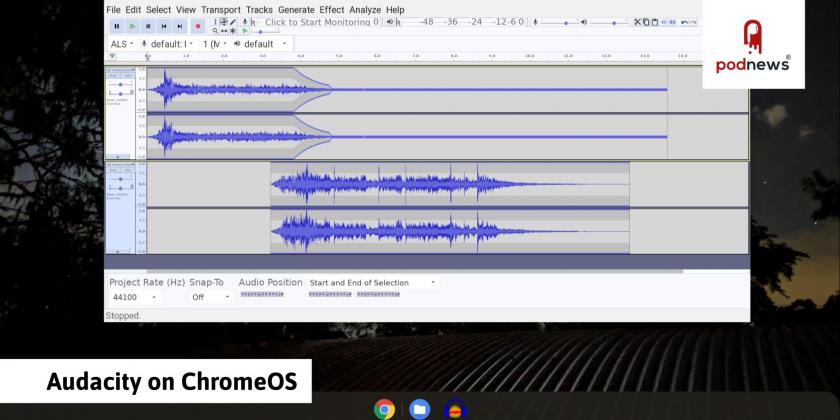
How to install Audacity on your Chromebook

Chromebooks are decent, capable machines, used in many places especially the education market: but they’re a little let down when it comes to audio editing software.
Fear not, though: it’s really easy to install Audacity onto your Chromebook and get some great audio editing software that will let you do almost everything you need to.
Four steps to install Audacity on ChromeOS
-
Go into settings, search for “about”, and ensure you’re running the latest version of Chrome OS. This will save you heartache later on.
-
Open the Terminal app in your Chromebook, which should be in your list of apps.
- You may see a message here saying “visit Developer Options to manage Linux”, and if you do, you’ll need to do that, and turn on Linux in the screen that appears. That will take ten minutes to install Linux on your machine - it’ll need to download some files and configure a few things, accompanied by a very boring screen.
If you’ve already set up Linux, click where it says “penguin” to enter the Linux terminal.
- You’ll now have a Terminal console blinking at you in all its green scariness. Type:
sudo apt-get install audacityto install the program. ('sudo’ means 'do this as a super user’; 'apt-get’ is the advanced packaging tool that Linux users use to install programs).
It’ll ask you if you want to install lots of things. Type “Y” (a capital y) to agree to everything, and hit enter.
Linux will spend a little time installing Audacity. Once it’s done, you can close the Terminal window.
(As of Dec 25, 2024, this installs v3.2.4 of Audacity. We weren’t testing this on a Chromebook we’d just given to a relative. Oh, no.)
You should now have an Audacity icon in your launcher. Go on, try clicking it - it should work well for you!
Using Audacity on your Chromebook
Linux on a Chromebook is a bit like a “machine inside another machine”, so in order for it to see your audio files, you’ll need to use the Files app on your Chromebook and pull an audio file into the new “Linux Files” folder in “My files” so that the Linux machine inside your Chromebook can see it. Once you’ve loaded it, try playing it - there’s an output volume in Audacity itself, which you might need to use.
You can load audio files, edit like you normally would, and export files from Audacity too - and it exports MP3 without having to fiddle with any additional files, too.
When you export files, they’ll again go into the “Linux files” area of your Chromebook. In the Files app, you can pull them out of there and do whatever else you want to do with them.
Enabling recording
You can edit, play back, and export perfectly happily on Audacity. There’s one more thing to do, to enable recording.
Go back to your Chromebook’s settings, and search for “Linux”. Now you’ve turned it on, there’s a little toggle switch in there to turn on microphone support:

Make sure this is turned on, and your Chromebook will have access to your microphone - both the one built-into your device, but also USB microphones and other devices.
You might find it’s a little slow: that’s probably due to the slow processor in your Chromebook. You might also find that an Android app might do a better job; but this appears to work well enough.
Good editing!
































































































